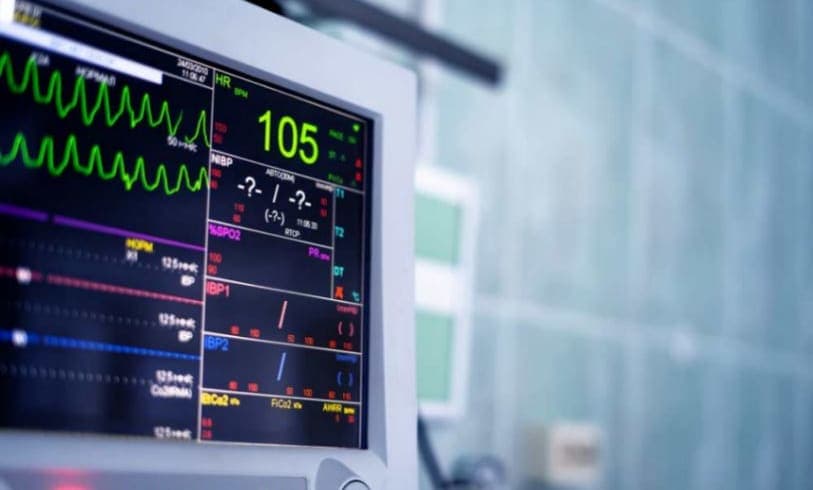
PROJECT
Pacemaker
| Mathew Abe | AUTHOR | ACTIVE |
| Adrian P Isaac | COORDINATOR | ACTIVE |

Abstract:
Heart disease is the leading cause of death across many groups, where an estimated person dies every 36 seconds. To address improper pulses, there is the pacemaker, a popular and widely utilized bio engineered device. This device takes signals from the heart, determines if the pacing generated by the heart spontaneously deviates from a predetermined normal pacing range, and responds by creating corrected pulses to the heart. This project proposes a design for a ventricular pacemaker that is responsive to intrinsic heart activity. The design does so by first using a bandpass filter to process and amplify electrical signals generated spontaneously by the heart. It then determines if the spontaneous signal is sufficient in generating the desired heart rate using an amplitude detector circuit. Finally, an astable integrated circuit timer regulates pulse generation according to the output of the amplitude detector circuit.
Faulty electrical signaling in the heart causes arrhythmias. Pacemakers use low-energy electrical pulses to overcome this faulty electrical signaling. They create forced rhythms according to natural human heart beats, to let the heart to function in a normal manner. They are also used for the following purposes as: • Speed up a slow heart rhythm and help control, an abnormal or fast heart rhythm. • Coordinate electrical signaling between the upper and lower chambers of the heart. • May act as cardiac re-synchronization therapy (CRT) devices, that coordinate electrical signaling between the ventricles, letting them to treat heart failure. • Monitor and record the heart’s electrical activity, blood temperature, breathing rate, and other factors like fatigue level in human body. • Adjust heart rate according to the changes in the activity of the human body, thereby, adaptive in nature. The following subsection briefly discuss about the working and deployment of a pacemaker
• R-Wave processing unit:
Essentially, a R-wave processor senses the present R-wave signal and adjusts it to be interpreted accurately throughout the rest of the pacemaker circuit. The electronic component chosen was a bandpass filter with an operational amplifier since it can both filter and amplify our R-wave signal. Filtering the R-wave is crucial to exclude external signals from everyday devices that indirectly interfere with signals, such as phones or computers.
• Amplitude Detector Circuit Design
The next circuit block primarily serves as a decoupler and amplitude detector. Decoupling refers to the elimination of AC noise of the received signal that may be present due to sudden or inconsistent voltage changes from the power source driving it
• Timer circuit
The desired pulse frequency for a pacemaker design is 75 beats per minute. An astable 555 timer was chosen to be the timer of choice. Astable 555 timers do not require a trigger to be able to create the pulse. This would be best in the case that an R-wave was missing, or that the heart is not generating enough R-waves to generate the desired heart rate. The total period of the heartbeat would be 0.8 seconds, which was a value obtained by taking the inverse of the desired frequency.
Progress - 12.07.2024
• Learnt in dept about how the depolarization and polarization happens
• Revision of how to read an electrocardiogram.
• This week end I started dwelling into the theory , repair and troubleshooting of medical devices
This weeks goals.
• Complete the previous weeks goals which is left incomplete
• Find a solution to implement how to detect an abnormal cardiograph or find a suitable alternative replacement
• Start to design the main circuit and check how far it works
Resources
Courses being used:
1. Electronics in Biomedical Engineering: Theory & Repair (UDEMY)
NPTEL:
1. Electrocardiography - Interpretation and clinical application (Week 1 ongoing)
Youtube : EKG interpretation
Research materials:
- Peter Carnahan – Simplified Pacemaker
- Implantable Biomedical Systems – Dr.A Tauqir
- Abott systems & Boston electronics website
Progress - 10.08.2024
Circuit simulation using LT SPICE & Falstad Simulator
As discussed, I have been working on a pacemaker simulation, and this is completely designed by my self to administer to cardiography
The input to the R-wave processing circuit comes from the lead placed in the right ventricle and the signal leaving the timing control will enter the same lead and stimulate the right ventricle into contraction
• R wave processing unit - senses the present R-wave signal and adjusts it to be interpreted accurately throughout the rest of the pacemaker circuit.
• The electronic component chosen was a bandpass filter with an operational amplifier since it can both filter and amplify our R-wave signal. • The average value range of an R-wave is 10-30Hz and the volts between 5-25 mV . Thus, the cut off frequencies for the low pass and high pass are respectively 10 Hz and 30Hz.
• Stabilizing part of circuit
The capacitor stabilizes the incoming signal it will store excess energy if there is a voltage spike or provide energy to the circuit if there is a sudden voltage drop. The capacitor is in parallel with a resistor, which allows for the charge stored on the capacitor to leak to ground at a controlled rate. This leakage allows the decoupling capacitor to continue to accept charge in the case of a signal spike.
• Triggering part of circuit
Astable 555 timers do not require a trigger to be able to create the pulse. This would be best in the case that an R-wave was missing, or that the heart is not generating enough R-waves to generate the desired heart rate. The total period of the heartbeat would be 0.8 seconds, which was a value obtained by taking the inverse of the desired frequency.
Problems faced :
- Finding right resources to complete the circuit
- Not able to get the correct output, of 1.5 volts i.e. R wave processing unit
(The desired output is not being shown )